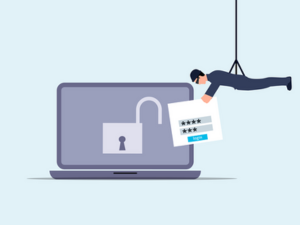Multi-Factor Authentication (MFA)
As a business leader, you want to protect your network from hacking and implement multi-factor authentication across your many accounts and devices. While these measures can boost your cybersecurity, hackers can exploit a few loopholes to infiltrate your account. Learn why you'll need to protect your accounts from unauthorized users further.
What Is Multi-Factor Authentication?
MFA is considered more secure because it requires users to enter more than just an account password to verify their identity. Having someone enter an additional authentication factor, such as a one-time password or SMS code, makes hacking more difficult in theory.
Users can keep their accounts secure by implementing any of the following factors that differentiate each user's identity:
- Something you know: Devices will ask you to enter a password, PIN, or security question answer that only you should know.
- Something you have: The possession factor includes other devices or accounts you own. You can prove your identity via an email, phone call, or one-time password token.
- Something you are: Also known as biometric authentication, this factor includes tactics like fingerprint scanning and facial recognition.
- Somewhere you are: Physical location becomes key for the account to confirm your user identity.
- Something you do: Devices can learn your behaviors while online and use them to determine whether it's you logging on.
Common Multi-Factor Authentication Weaknesses
While it's true that using multi-factor authentication is better than having no security measures in place, hackers can still infiltrate your accounts with social engineering and phishing. Cybercriminals can figure out passwords and common possession factors like SMS messages if they successfully execute a phishing attack to retrieve personal information.
Requiring MFA for all accounts within your business could become counterproductive since employees might lose access if they don't have the proper authentication factors. Navigating these weaknesses is essential for getting the most out of MFA and protecting your business from security breaches.
How To Boost Your Business's Cybersecurity With MFA
Don't ditch MFA measures because of a few weaknesses. Instead, continue to ask for authentication in highly secure ways.
Implement Risk-Based Authentication
Experts recommend using risk-based authentication to provide extra security when user activity raises some concerns. This activity includes:
- Logging in from an unknown device
- Logging in at a location considered high-risk
- Logging in outside of the desired IP range
Risk-based authentication can help you verify that whoever's logging on is authorized to do so.
Use Passkeys
Passkeys increase your security measures as an extension of the knowledge and possession factors. Users will possess a special device, such as a mobile phone, and use either a PIN or biometric factor to receive access. The device then displays a cryptographic key.
An algorithm generates a random string of characters to serve as the account's additional authentication factor. Passkeys resist phishing attacks, making them one of the most secure authentication factors.
Contact Industry Experts for Assistance
Make your business as secure as possible with multi-factor authentication and other recommended measures. Let a cybersecurity expert guide you to business success. Contact our professionals today to learn more.
Additional Information
Microsoft Support: What is: Multifactor Authentication
CISA: More than a Password
Please sign up for our newsletter above
By Denis Wilson

Thanks for reading this post. I always take into mind that your time and attention are precious. And these posts need to be timely, to the point, and short. For more tips on thriving with small business technology, check out the other blog posts at DWPIA Blogs. You can also find me on LinkedIn, YouTube, and Facebook.
I am also a published author and speaker on cloud computing, work-from-anywhere, and cybersecurity. I work extensively with business and professional associations to provide small business technology education programs.
Contact me if you have any questions about the subject. I'd be happy to spend 15 minutes discussing it with you.

